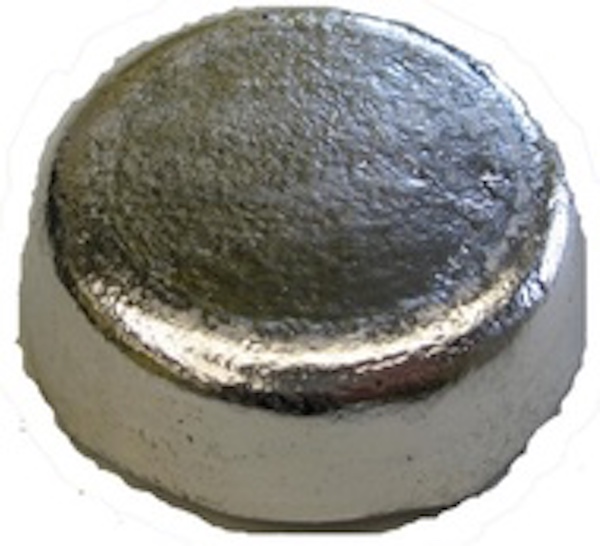
It’s entirely possible to cast metal in plastic molds you’ve 3D printed; just not with the metals you’re used to.
Metal casting is a process used by some with 3D printed shapes, as we wrote here, describing the traditional lost wax casting process. However, the mold used in this process isn’t what’s 3D printed: the mold is developed in plaster or other casting mediums by burning out the 3D printed model.
But is it possible to 3D print a mold in plastic and cast metal?
You’d think that’s not possible, as the melting point of aluminum, 660C is far above the melting point of any 3D printed plastic. The plastic mold would vaporize upon contact with liquid aluminum.
But after reading Walter Hsiao of Thrinter’s experiments, I was inspired to examine this further.
It turns out there is a class of metals that have relatively low melting points. In some cases, these melting points are actually lower than the melting points of 3D printed plastic.
The class of low-temperature metals is termed “Fusible Alloys”, according to Wikipedia:
A fusible alloy is a metal alloy capable of being easily fused, i.e. easily meltable, at relatively low temperatures. Fusible alloys are commonly, but not necessarily, eutectic alloys.
Sometimes the term “fusible alloy” is used to describe alloys with a melting point below 183 °C (361 °F; 456 K). Fusible alloys in this sense are used for solder.
They are alloys of bismuth, lead, tin, indium, cadmium, thallium, gallium and antimony in different proportions. Some commonly available fusible alloys are Rose’s Metal, Wood’s Metal and Field’s Metal. All of these have melt points less than 100C, and Field’s Metal melts at only 62C. All of these would be perfectly suitable for casting in 3D printed plastic.
But there are some issues. Wood’s metal contains cadmium, and this is considered toxic, especially in liquid form where vapor may be inhaled. Rose’s Metal does not contain cadmium and thus is considered safe.
The other issue is pricing. I checked out some pricing for these three materials and found the prices as follows:
-
Rose’s Metal: USD$35/kg
-
Wood’s Metal: USD$33/kg
-
Field’s Metal: USD$704/kg
Whoa! What’s up with Field’s Metal? Turns out this alloy contains Indium, which is rare and therefore pricey.
While Hsiao used the toxic Wood’s Metal in his experiment, it might be best to use Rose’s Metal due to cost and safety, if you’re inclined to give this technique a try.
Finally – I must caution readers who attempt this form of making, as there are several dangerous aspects, including proximity to toxic metals, production of noxious vapors and not the least the handling of hot, liquid metals. If you attempt metal casting, be certain you are doing so in a properly ventilated and fireproof area. Be safe!
Via Thrinter and Rotometals

